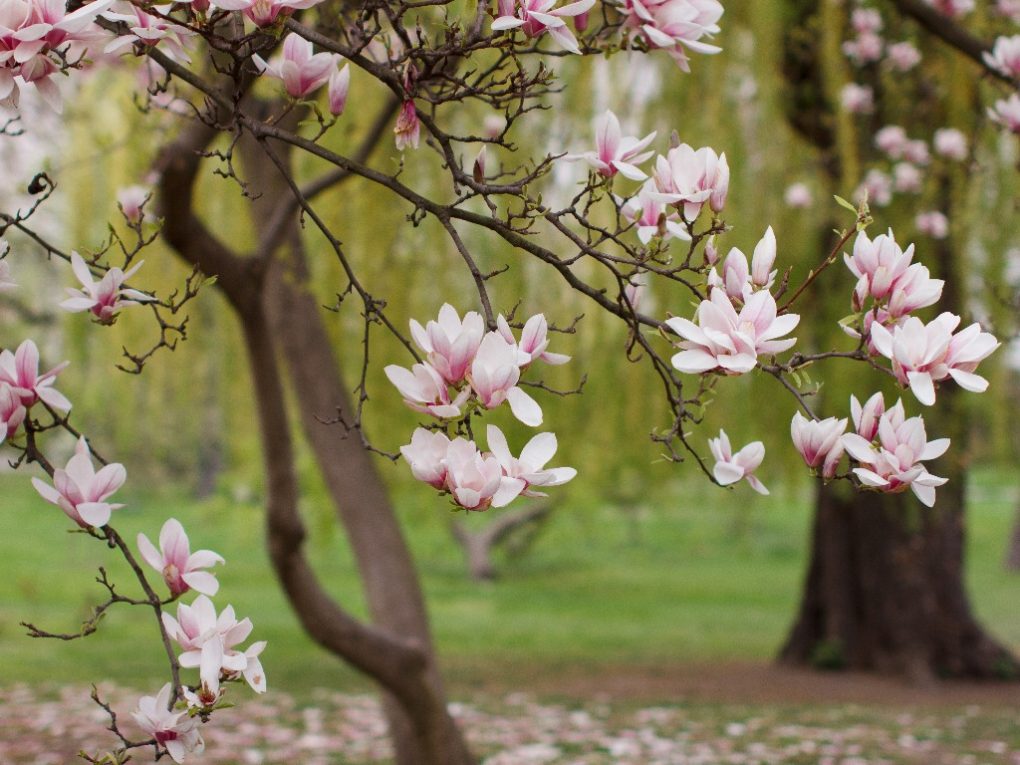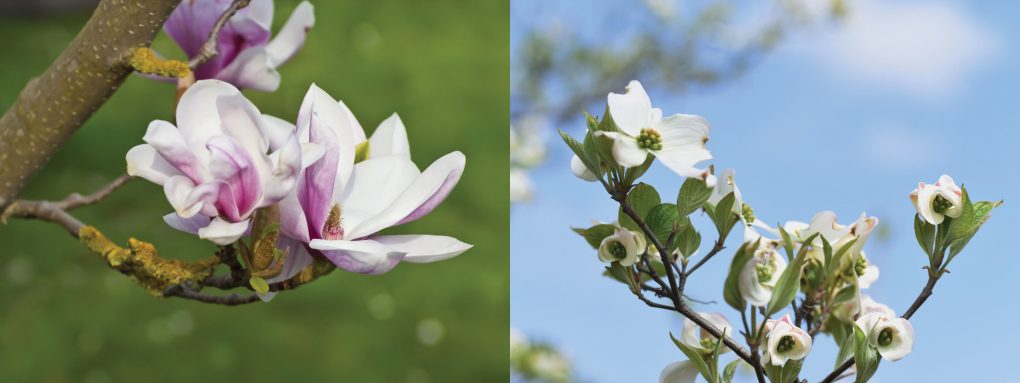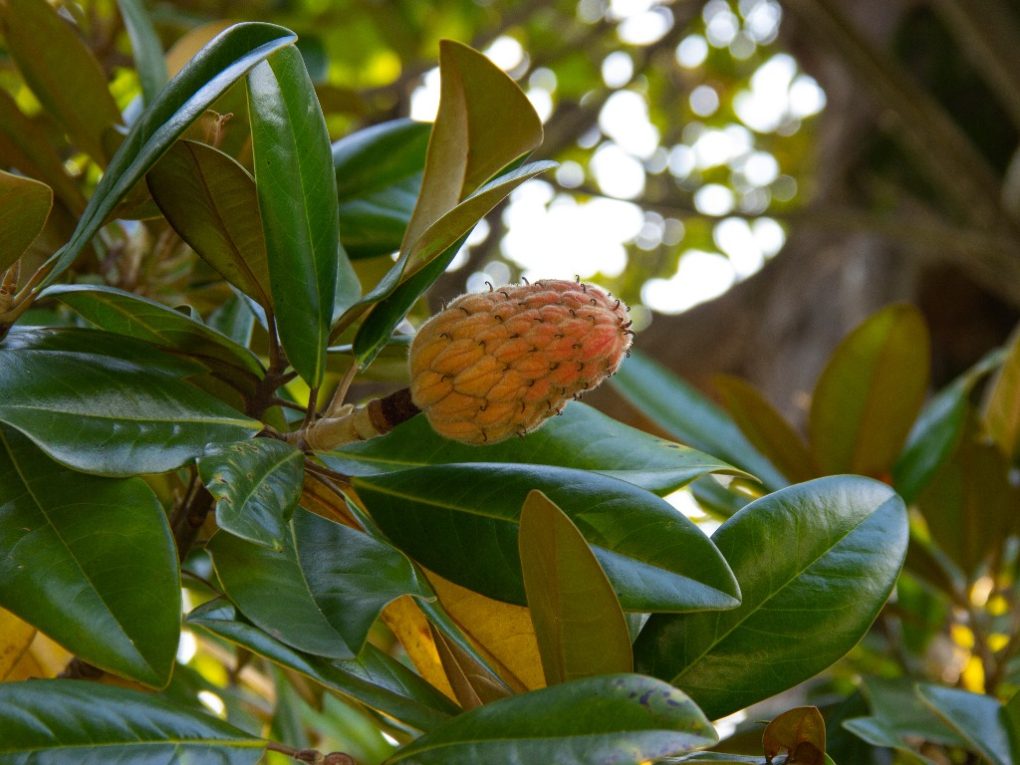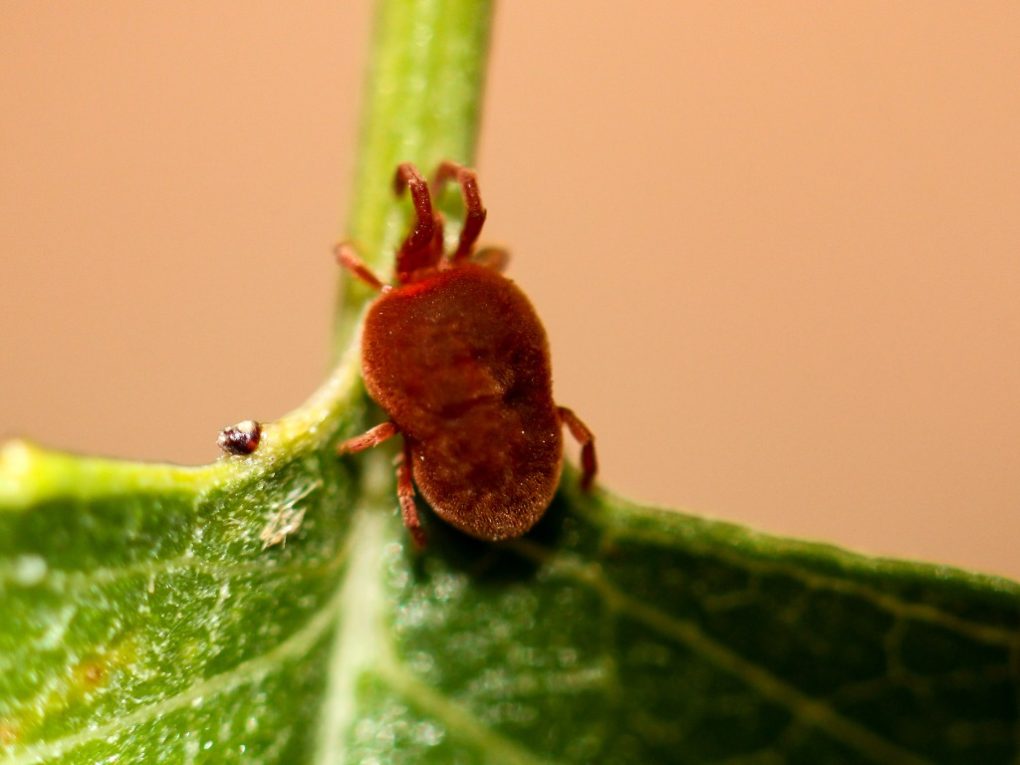Magnolia vs. Dogwood: Choosing the Right Tree for Your Landscape
Magnolias are typically much larger than dogwoods, making them better suited for larger, more open areas. They can be used effectively as shade trees and privacy screens. On the other hand, dogwoods are smaller and more compact, making them better suited for smaller gardens and landscapes.

Another key difference between magnolia and dogwood trees is their foliage. Dogwoods are known for their excellent fall foliage, while magnolias typically lack autumn brilliance. Additionally, while the southern magnolia is evergreen throughout most of its range, providing some winter interest, the magnolias do not produce vivid fall colors.
Table of Contents
Differences Between Magnolia and Dogwood Trees
Appearance
Magnolia trees are famous for their large, showy flowers that bloom in the spring and summer. The flowers can be white, pink, purple, or yellow and often have a pleasant fragrance. Magnolia leaves are typically large and glossy and can be evergreen or deciduous, depending on the species.
On the other hand, dogwood trees have smaller, less showy flowers that bloom in the spring. The flowers are typically white or pink and arranged in clusters. Dogwood leaves are also smaller and less glossy than magnolia, typically deciduous.
Magnolia bark is often smooth and grey, with some species having a slight ridge pattern. On the other hand, dogwood bark is typically smooth and brown or gray, with a more blocky, polygonal pattern.

Habitat
Magnolias are native to Asia and the Americas and are typically found in warm, humid climates. They prefer well-drained soil and partial shade, although some species can tolerate full sun.
Dogwoods are native to Europe, North America, and Asia and are typically found in woodland habitats. They like moist, well-drained soil and partial shade, although they can also tolerate full sun.
Magnolias require consistent moisture but can be susceptible to root rot if the soil becomes overly-waterlogged. Dogwoods also require regular watering but can tolerate some dryness in the soil. Magnolias also prefer lower elevations and may not thrive at high altitudes. Dogwoods are more adaptable to various elevations and can be found at low and high altitudes.
Fruit
Magnolia trees produce large, cone-shaped fruit that is often referred to as “cones.” These cones comprise multiple carpels, each containing a single seed. On the other hand, the fruit of dogwood trees is small, round, and berry-like, with a fleshy texture and a single seed.
Magnolia cones are typically brown or gray and may be covered in a layer of scales or hairs. On the other hand, the fruit of dogwood trees can be red, pink, or purple and may turn a deep red or burgundy color as they mature.

While some species of magnolia produce edible fruit, most do not. However, the fruit of dogwood trees is often eaten by birds and other wildlife, and some species are even grown for their edible fruit.
Uses
Magnolia and Dogwood are popular ornamental trees due to their beautiful, showy flowers. Magnolias are often used as specimen trees, while Dogwoods are often used in groupings or as an understory tree. Magnolias are also commonly used in landscaping as a privacy screen or windbreak due to their dense foliage.
Both Magnolia and Dogwood trees have been used in traditional medicine for centuries. Magnolia bark has been used in Chinese medicine to treat anxiety, depression, and digestive issues. It has compounds that have been proven to have anti-inflammatory and anti-cancer properties.

Dogwood bark has been used in Native American medicine to treat fever, pain, and respiratory issues. It contains compounds that have been shown to have anti-inflammatory and anti-tumor properties.
While Magnolia and Dogwood trees are not commonly used in cooking, their flowers and fruit can add flavor and decoration to dishes. For example, magnolia flowers can be candied or used to flavor tea, while Dogwood fruit can make jams and jellies.
Caring for Magnolia and Dogwood Trees
Planting
Magnolia and dogwood trees require well-draining soil that is rich in organic matter. Planting these trees in the right location is essential for their growth and development. Magnolias prefer a location with full sun to partial shade, while dogwoods thrive in partial shade.
When planting either magnolia or dogwood trees, the hole should be dug slightly deeper and wider than the root ball to allow room for the roots to grow. The tree should be planted at the same level it was growing in the container, with the top of the root ball surface with the surrounding soil.
Magnolia trees are generally low-maintenance and do not require regular fertilization. Dogwood trees may benefit from an application of a balanced fertilizer. Mulching around the tree’s base with a layer of organic material, like wood chips or bark, can also help retain moisture and suppress weeds.
Watering
Magnolia trees generally prefer a moderate amount of water, and they do not tolerate excessive water or drought conditions. However, magnolias have deep taproots that can reach down to access water in the soil.
It is best to water magnolia trees deeply and infrequently, allowing the soil to dry out slightly from time to time. Overwatering can cause root rot and other fungal diseases, harming the tree.

Dogwood trees generally prefer consistently moist soil but not waterlogged soil. They are shallow-rooted trees that need regular watering to ensure healthy growth and development. Therefore, it is best to water dogwood trees regularly, keeping the soil evenly moist but not saturated.
Pruning
Pruning is important for maintaining the shape and health of magnolia and dogwood trees. Prune in late winter or early spring before new growth begins. Remove any dead, diseased, or damaged branches and any crossing or rubbing branches. Avoid pruning too heavily, which can stress the tree and reduce its overall health and vigor.
Magnolia trees only require a little pruning except to remove dead or damaged branches and shape the tree if necessary. Magnolias should be pruned before new growth begins. When pruning, be very careful not to remove too much of the tree’s foliage, as this can weaken the tree and reduce its ability to photosynthesize.
Dogwood trees require more frequent pruning to maintain their shape and promote flowering. Dogwoods should be pruned immediately after they bloom, as they set their flower buds for the following year in late summer or early fall.
Pruning dogwoods in the fall or winter can remove these flower buds and reduce the tree’s blooming potential for the following year. When pruning Dogwood, removing any dead or damaged branches and any branches crossing or rubbing against each other is best.
Pest and Disease Control
Magnolia and dogwood trees are susceptible to a range of pests and diseases. Common pests include scale insects, aphids, and spider mites, while some of the most common diseases include powdery mildew and leaf spot.

Keep the trees healthy and stress-free by following the above care guidelines to prevent these problems. If pest or disease problems occur, treat them promptly with an appropriate insecticide or fungicide.
To control pests, regularly inspect the tree for signs and symptoms of infestation and treat it with insecticidal soap or horticultural oil as needed. To control diseases, maintain good sanitation practices such as removing fallen leaves and debris around the tree and treating with a fungicide as needed.
